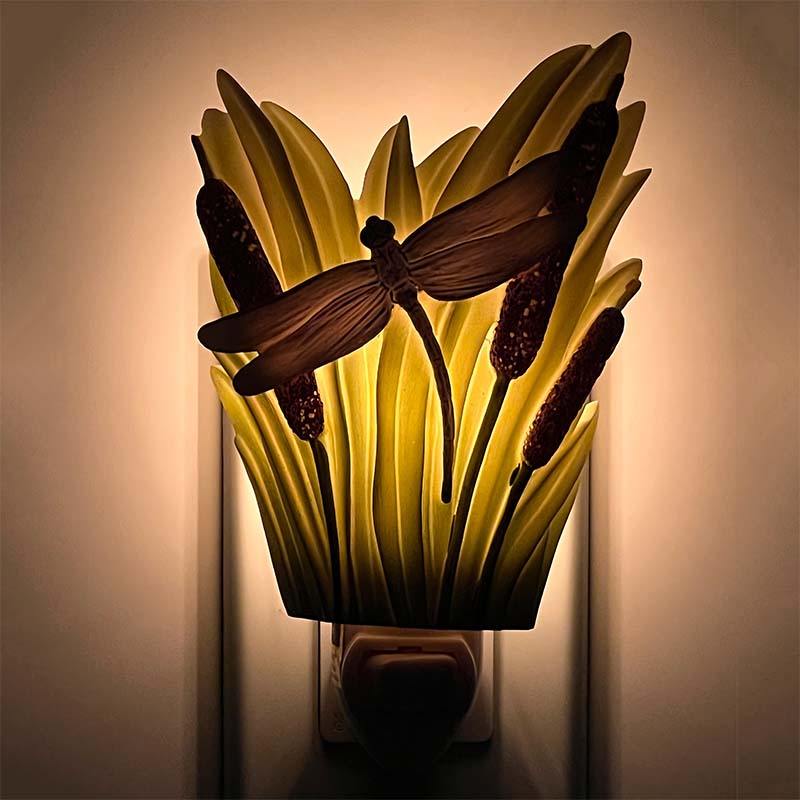The Dragonfly Night Light Plug-In: A Comprehensive Guide
What is the Dragonfly Night Light Plug-In?
The Dragonfly Night Light Plug-In is an innovative lighting solution designed to provide ambient illumination (typically 10-50 lumens) while consuming minimal energy (0.5W-2W power consumption). This compact device features a dragonfly-inspired design with LED bulbs (CRI >80) that emit a soft, warm glow (2700K-3000K color temperature), making it ideal for nighttime use. The plug-in design allows for universal socket compatibility (100-240V AC) and eliminates the need for batteries or external power sources.
Key technical specifications:
Luminous flux: 10-50 lumens (adjustable in premium models)
Power consumption: 0.5W-2W (energy class A++)
LED lifespan: 25,000-50,000 hours (L70 rating)
Color rendering index (CRI): >80
Color temperature: 2700K-3000K (warm white)

Key Features with Professional Data
1. Energy Efficiency: The Dragonfly Night Light utilizes high-efficiency LEDs with 100-120 lm/W efficacy, significantly outperforming traditional Night Lights (incandescent versions typically offer 10-17 lm/W). Advanced models feature photocell sensors (2-10 lux activation threshold) that automatically turn the light on at dusk and off at dawn.
2. Safety Features: Engineered with overheat protection (activates at 60°C/140°F) and UL/cUL certification, the device maintains a safe surface temperature below 40°C/104°F during continuous operation. The polycarbonate housing (V0 flammability rating) ensures durability and fire resistance.
3. Customizable Illumination: Premium models offer dimmable functionality (10%-100% brightness range) and color temperature adjustment (2700K-6500K) through smartphone apps using Bluetooth 5.0 (10m range) or Wi-Fi connectivity (2.4GHz band).
4. Directional Lighting: The articulating wings provide 120° beam angle adjustment, allowing users to direct light precisely where needed while minimizing light pollution (0% upward light ratio).
Application Scenarios
1. Pediatric Environments: In children's bedrooms, the Dragonfly Night Light provides 0.1-0.3 lux of soft illumination - sufficient for nighttime visibility without disrupting melatonin production. Hospitals utilize medical-grade versions with antibacterial coatings (99.9% microbial reduction) in neonatal units.
2. Elderly Care: The motion-activated versions (3m detection range) help prevent falls by illuminating pathways with 5-10 lux when movement is detected. Memory care facilities benefit from the 24/7 programmable models that maintain circadian rhythms.
3. Hospitality Industry: Hotels install these lights in guest bathrooms, providing 15-20 lux of nighttime wayfinding illumination that's 40% less intrusive than standard night lights. The IP44-rated waterproof models are ideal for spa areas.
4. Commercial Applications: Office buildings use the Dragonfly lights for emergency egress path marking (meeting NFPA 101 requirements) with 90-minute battery backup in case of power failure.
Maintenance Procedures
1. Regular Cleaning: Use a microfiber cloth (GSM 200-300) dampened with isopropyl alcohol (70% concentration) to clean the housing every 2-3 months. Avoid abrasive cleaners that could damage the anti-glare coating (haze <15%).
2. Electrical Safety Checks: Monthly inspect the plug for thermal damage (discoloration above 100°C) or pin deformation (>0.5mm deviation). Test GFCI-protected models (6mA trip current) using the built-in test button quarterly.
3. Component Maintenance: For models with replaceable LEDs (L70 at 50,000 hours), follow the manufacturer's guidelines for thermal paste replacement (1.5-2.5 W/m·K conductivity) every 5 years or 10,000 operating hours.
4. Smart Feature Updates: Connected models require firmware updates (typically 2-4MB file size) every 6-12 months to maintain optimal performance and security. Ensure the Zigbee 3.0 (250kbps data rate) or Thread (1.1 protocol) networks are properly configured.
5. Photocell Calibration: Annually verify the lux threshold accuracy (±5%) using a certified light meter (Class B or better). Clean the photocell sensor window (92% light transmission) with optical-grade cleaner to maintain sensitivity.







